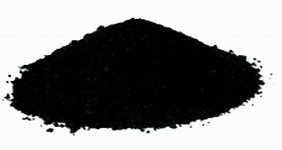ORISIL MICROSILICA, SILICA FUME INDIA
for concrete and refractories

Silica fume, also known as micro silica, is an amorphous (non-crystalline) polymorph of silicon dioxide. It is an ultrafine powder collected as a by-product of the silicon and ferrosilicon alloy production and consists of spherical particles with an average particle diameter of 150 nm1application is as pozzolanic material for high performance concrete. Silica fume is an ultrafine airborne material with spherical particles less than 1 μm in diameter, the average being about 0.1 μm. This makes it approximately 100 times smaller than the average cement particle. Because of its extreme fineness and high silica content, silica fume is a very effective pozzolanic material. Standard specifications for silica fume used in cementitious mixtures are ASTM C1240,EN 13263.
Silica fume-Microsilica is added to Portland Cement Concrete to improve its properties, in particular its compressive strength, bond strength, and abrasion resistance. These improvements stem from both the mechanical improvements resulting from addition of a very fine powder to the cement paste mix as well as from the Pozzolanic reactions between the silica fume and free calcim hydroxide in the paste.
Addition of silica fume also reduces the permeability of concrete to chloride ions, which protects the reinforcing steel of concrete from corrosion, especially in chloride-rich environments such as coastal regions and those of humid continental roadways and runways (because of the use of deicingsalts) and saltwater bridges. MICROSILICA, SILICA FUME FOR REFRACTORY In the last three decades, microsilica has been widely used as filler in refractory materials, particularly in castables. Microsilica particles have an average size of 0.15 microns and are an amorphous form of silica which may contain smaller quantities of impurities like C, Na or K formed along the production route. Of late, microsilica from ferrosilicon production is not used for refractory applications owing to higher impurity contents. Microsilica in a fresh castable has a dual effect; once properly dispersed, it helps to reduce the cement content of refractory castables due to the small particle size of microsilica. Use of microsilica may also reduce the open porosity from about 20-30% to 8-16% after firing at 1000 ºC, and the drop in mechanical strength that is experienced in conventional castables at intermediate temperatures changes to that of a steady increase. The beneficial effects of microsilica in castables are well established both in theory and practice.
Microsilica is thus added to alumina based refractories to improve the mechanical properties at lower costs and its utilisation results in a two-fold increase in mechanical strength over the same composition obtained by using chemical grade silica. However, microsilica is believed to improve the flow behaviour of castables through the formation of low melting liquid calcium aluminosilicate phases. Thus the properties of castables containing microsilica are greatly influenced by the CaO content in the composition.
Acting as a filler is not the only effect of microsilica in refractory castables. It has been shown in studies of cement pastes with microsilica that a certain fraction of the microsilica reacts with the cement and water to form so-called C-A-S-H (CaO-Al2O3-SiO2-H2O) phases in addition to the C-A-H (CaO-Al2O3-H2O) and A-H (CaO-Al2O3) phases normally found in hydrated cement. The C-A-S-H phases are of zeolitic nature and the amounts of these hydration products are dependent on the quality (purity) of the microsilica.






SHARE THIS PAGE!